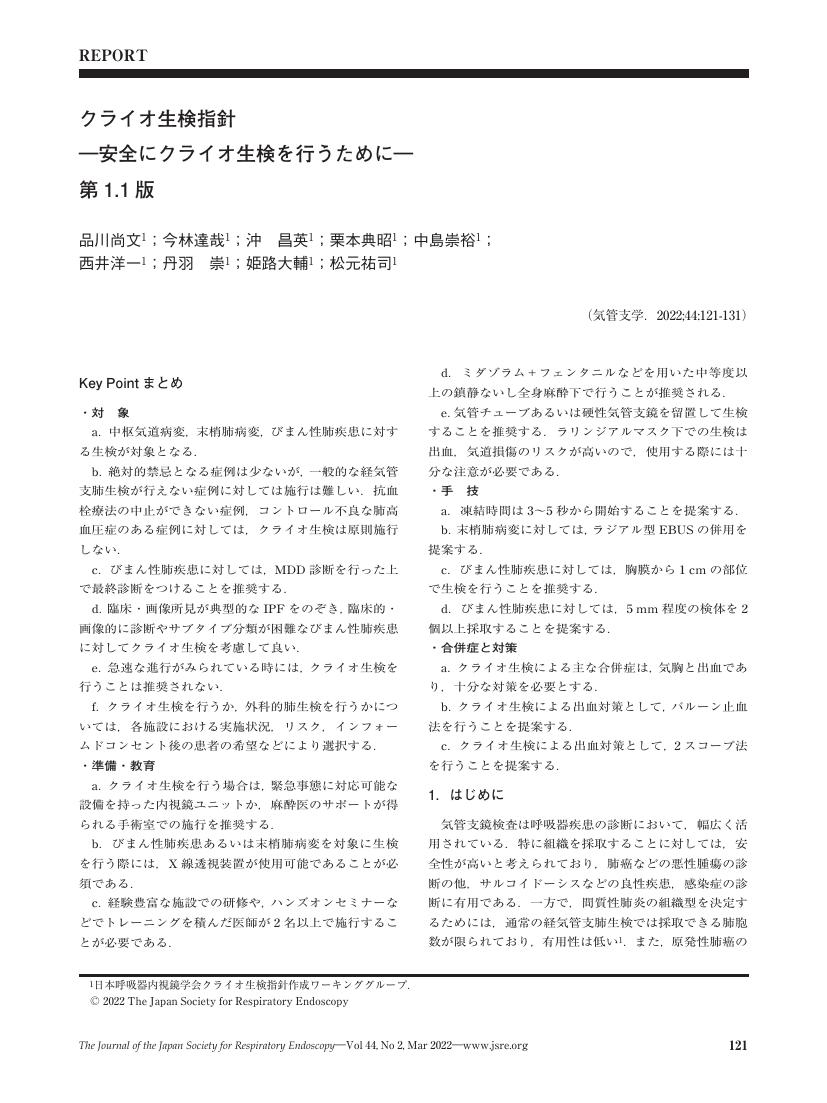- J-STAGEトップ
- /
- 気管支学
- /
- 44 巻 (2022) 2 号
- /
- 書誌
-
品川 尚文
日本呼吸器内視鏡学会クライオ生検指針作成ワーキンググループ
-
今林 達哉
日本呼吸器内視鏡学会クライオ生検指針作成ワーキンググループ
-
沖 昌英
日本呼吸器内視鏡学会クライオ生検指針作成ワーキンググループ
-
栗本 典昭
日本呼吸器内視鏡学会クライオ生検指針作成ワーキンググループ
-
中島 崇裕
日本呼吸器内視鏡学会クライオ生検指針作成ワーキンググループ
-
西井 洋一
日本呼吸器内視鏡学会クライオ生検指針作成ワーキンググループ
-
丹羽 崇
日本呼吸器内視鏡学会クライオ生検指針作成ワーキンググループ
-
姫路 大輔
日本呼吸器内視鏡学会クライオ生検指針作成ワーキンググループ
-
松元 祐司
日本呼吸器内視鏡学会クライオ生検指針作成ワーキンググループ
2022 年 44 巻 2 号 p. 121-131
- 発行日: 2022/03/25 受付日: - J-STAGE公開日: 2022/04/02 採択日: - 早期公開日: - 改訂日: -
(EndNote、Reference Manager、ProCite、RefWorksとの互換性あり)
(BibDesk、LaTeXとの互換性あり)


